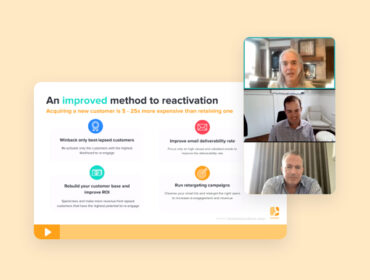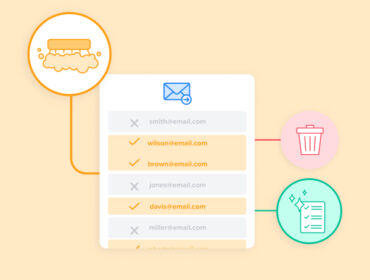The third-party shot clock is counting down – are you ready?

23 …
22 …
21 …
The shot clock winds down. Heart is pounding. Ready to go for the shot. Less than 20 seconds to go, and …
Ok, so marketers have a bit more time to prepare for the death of the third-party cookie. About a year and a half until they’re blocked on Google Chrome, specifically. But they know that when it comes, it’s going to shake up the industry and revolutionize how we understand customer data and ad targeting. So, understandably, publishers and brands are starting to feel the pressure.
As Erik Requidan, co-founder and CEO of Media Tradecraft, said in our recent Real Time Banter webinar, “I think we’re all taking about this countdown and this shot clock that’s out there. There are never enough hours in the day.”
The question is: Are you ready for when the clock hits 0?
Follow these steps to make sure you are.
1. Think about what type of publisher you are
As cofounders of Media Tradecraft, Requidan and Justin Hansen spend a lot of time preparing for the cookiepocalypse. They work with publishers to build custom ad strategies and better connect with buyers. And, according to Hansen, building that first-party data strategy starts with understanding who you are as a publisher.
“Do you have a lot of first-party data? Are you a really large publisher that can utilize some of that? Are you a publisher with loyal audiences and big email lists?” he asked. “Some publishers have loyal audiences but never built an email strategy. This is the time to start thinking about that.”
A lot of cookiepocalypse solutions are being thrown around, but it’s important to choose the one that best meets your data needs as a publisher.
2. Break down your process into manageable tasks
It’s easy to get overwhelmed when we throw around terms like “apocalypse.” But the truth is that publishers have time, and they can make the most of that time by creating a game plan and breaking it down into actionable goals with set dates. As Requidan said, we’ve already done this with RTB, containers and wrappers, PMPs, and header bidding.
“This is one of those rare scenarios where we have a date,” Hansen said. “So how can we take that amount of time, break it down into chunks and then measure those chunks and build off of them? So we can say, ‘Oh, wow, we got here already and it’s only December. Where can we get to come March?'”
3. Designate a leader
Well, someone has to captain this ship – and now’s the time to figure out who.
“You have to start figuring out internally who’s going to lead these efforts and who’s going to be the crew that’s driving this,” Requidan said. “Ultimately, it seems like a lot of this will fall on the shoulders of operations teams and folks who are used to consistent challenges every 8–16 months. But being able to identify who’s going to lead is crucial.”
4. Get buy-in from the business side
If executives aren’t on-board with this data strategy shift, just point to Safari, which has already blocked third-party cookies.
“As it stands right now, we know that Safari’s cookie-less world usually has lower CPMs,” Hansen said. “So that might resonate that this has to be a priority. Because what if 100% of our inventory suddenly becomes like that? They’ll realize that we have to invest in this and figure out a better solution.”
5. Communicate with peers
Publishers aren’t going through this alone. And they shouldn’t be afraid to lean on one another to share ideas, garner support, and build even better strategies.
“Communicate with others,” Requidan said. “Talk to other publishers, talk to ad tech partners, talk to buyers. We often have these discussions behind closed doors. Or we talk about other subject matters like header bidding or wrappers. We need to make this part of that dialogue.”
Enjoyed this post and want to stay up-to-date on all things MarTech and i? Subscribe to the LiveIntent Newsletter.


